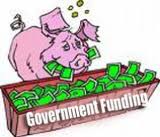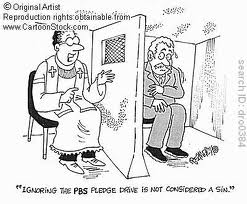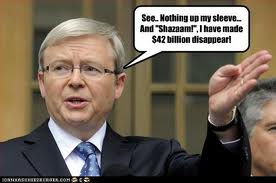 In my hometown of Elgin, Illinois, there have been a number of sleepless nights for non-profit organizations whose revenue model is heavily dependent on government funding. The economy and housing bubble caught up with the city, and now there are projected budget deficits. As you can imagine, non-profit funding is on the proposed chopping block. All of this is compounded by the fact that we live in Illinois, which by most accounts has one of the worst state budget problems in the country. So, state funding has also been on the retreat for years.
In my hometown of Elgin, Illinois, there have been a number of sleepless nights for non-profit organizations whose revenue model is heavily dependent on government funding. The economy and housing bubble caught up with the city, and now there are projected budget deficits. As you can imagine, non-profit funding is on the proposed chopping block. All of this is compounded by the fact that we live in Illinois, which by most accounts has one of the worst state budget problems in the country. So, state funding has also been on the retreat for years.
I’ve been saying for years to all of my non-profit friends who would listen: “the government funding gravy train is coming to a halt . . . get out and get out NOW.”
Usually this dramatic plea has been met with nods of agreement, then shoulder shrugs, and finally questions around “how to”.
Yesterday’s blog post about non-profit benchmarking titled “What Gets Measured Gets Done” got me thinking and wondering: has anyone ever done this before, and if so, do they have a roadmap that others can duplicate?
 It didn’t take long for me to find an answer, and it was there in front of me all along. National Public Radio (NPR) was founded in 1970. It was heavily and almost exclusively government funding supported through much of the 1970s and 1980s. Today it receives less than 10-percent of its revenue from the federal government.
It didn’t take long for me to find an answer, and it was there in front of me all along. National Public Radio (NPR) was founded in 1970. It was heavily and almost exclusively government funding supported through much of the 1970s and 1980s. Today it receives less than 10-percent of its revenue from the federal government.
From what I can tell, it didn’t happen overnight but it seems to have occurred quickly after a funding crisis in 1983.
 It shouldn’t surprise anyone that NPR turned to individuals as a cornerstone to their strategy. After all, more than three-quarters of all charitable giving in America comes from individuals.
It shouldn’t surprise anyone that NPR turned to individuals as a cornerstone to their strategy. After all, more than three-quarters of all charitable giving in America comes from individuals.
So, there you go . . . it is a roadmap! It might not be an easy road, but it has been done before, and it is possible to transform your revenue model. Here are just a few quick suggestions for those of you who are interested in taking the next few steps:
- Tune into NPR and start listening. While tuning in for the programming can be fun and delightful, I especially recommend listening during the pledge drive. Bring your notepad and pencil because there are lots of notes to take. NPR does one of the best jobs I’ve seen with their pledge drive. They employ best practices effortlessly. We can all learn a lot if we just listen and watch.
- Consider making a pledge. I made my first pledge to NPR in 1998 during the Clinton impeachment trial. After making that small contribution, the stewardship stuff and communications I received from them was amazing and almost felt like drinking out of a fire hose. They do a nice job with stewardship. It was the best $25 I’ve ever spent in my life, and it was cheaper than most trainings.
- Go check-out their cyber presence. Review their website. Follow them on Twitter. Like them on Facebook. Subscribe to a few of their blogs. Then sit back and watch them masterfully use social media and the internet to cross promote content and communicate with their clients who are also their donors.
Obviously, NPR’s plan can’t be exactly duplicated for a number of reasons. However, it is a good place to start. Please note that the aforementioned bullet points can all be done today and only focus on listening, observing and fact gathering. This is, after all, the essence of benchmarking. There will be lots of action and work on the road ahead, but for now it is important to do your homework and engage your volunteers with both the benchmarking and planning efforts.
How does your agency plan on adjusting its revenue model? What is your strategy? Are you benchmarking yet, and if so who are you studying?
Please use the comment box below to answer these questions and share your thoughts with the rest of us. It only takes a minute and you feel good inside when you do so. Why do it . . . because we can all learn from each other!
Here’s to your health!
Erik Anderson
Founder & President, The Healthy Non-Profit LLC
www.thehealthynonprofit.com
erik@thehealthynonprofit.com
http://twitter.com/#!/eanderson847
http://www.facebook.com/eanderson847
http://www.linkedin.com/in/erikanderson847




















